Email Marketing Guide: Tips for Creating a Successful Email Campaign
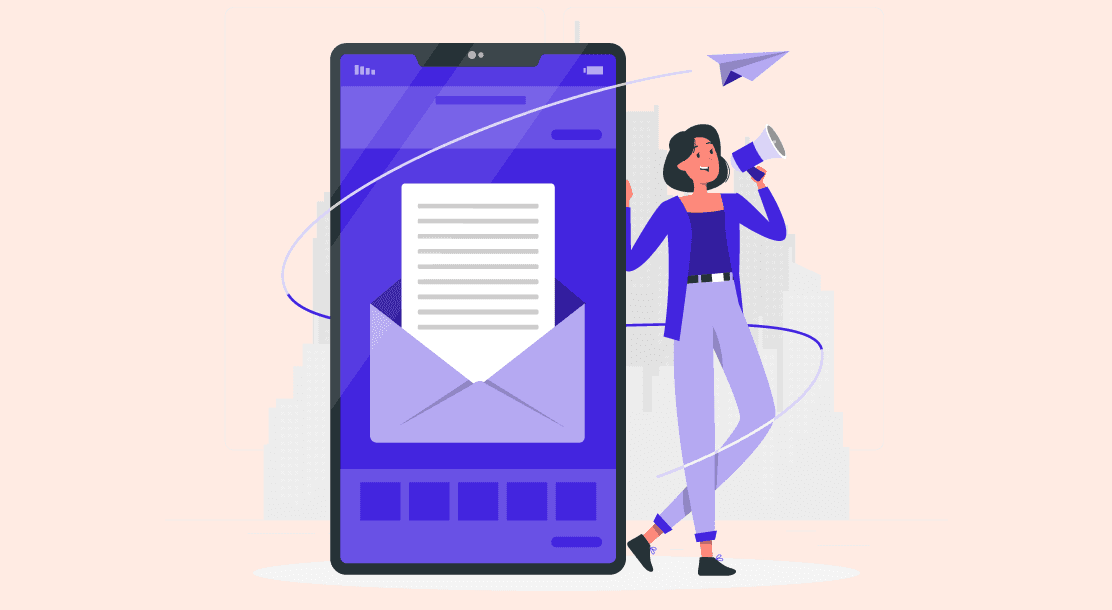
Email marketing is a way to reach out to the people who have permitted you to send them emails. It can be an email newsletter or other types of commercial messages. Some companies use it as part of their inbound and outbound marketing efforts to generate leads and improve business processes.
An email marketing guide helps you learn about email marketing and grow your business. It includes all the information you need to get started, including tips to create successful email campaigns, build your email list, and measure the success of your efforts.
Email marketing effectively connects with your customers and keeps them updated on your latest products and services. It allows you to reach a large audience quickly and efficiently and can be used to promote special offers and new products and keep your users informed about the new happenings in your business.
How Does Email Marketing Work?
Email marketing involves sending messages directly to your customers’ email inboxes. When you create an email campaign, you specify the target audience, create a message, and send it to your subscribers. The message is delivered as an HTML email, which allows you to include graphics and other multimedia content.
Email marketing is one of the most cost-effective methods compared to SEO or social media. There are many ways through which you can run your email campaign: automated emails, which are triggered by an action on your site; personalized emails that are sent based on a user’s behavior or profile; transactional emails, which are automated emails used for things such as password resets or purchase receipts.

Another form of sending emails is newsletters, wherein you send newsletters every couple of days with content specific to what the audience signed up for. When it comes to newsletters, it is important not to spam people, as this can degrade your brand image, making people unsubscribe from your newsletter lists.
Email marketing also allows you to send emails to people who have opted in and taken action, such as filling out a contact form on your website or submitting their name and email address during the checkout process.
On the other hand, multichannel email marketing uses multiple channels such as social media, search engines, and more targeted offline advertising to deliver consistent messaging.
To start email marketing, you first need to create an email list. You can then begin creating campaigns and sending them out to your subscribers. You can create several email marketing campaigns, including announcements, newsletters, new product promotions, coupons and deals, holiday greetings, etc., all of which are covered in this guide.
Email Marketing Guide: Why Use One?
Email marketing allows businesses to connect with customers and update them on their latest products and services. It is an effective way to reach a large audience quickly and easily.
Email marketing is also a cost-effective way to market compared to other forms of marketing.
In this email marketing guide, you will learn about why it benefits your business, how it works, and how you can get started.

Email marketing is still among the most effective forms of digital marketing available today. Email newsletter subscribers are typically above average when spending money online (a study shows that digital users are likely to make purchases due to targeted emails).
So, it makes sense to focus at least some of your marketing efforts on this valuable group of people. There are many reasons why you should consider using email marketing.
1. It reaches more people
Email is one of the most common ways to stay in touch with friends and family. It’s also one of the most common ways to learn about new products, services, and offers. Email marketing reaches a broader audience than many other forms of digital marketing. Also, it reaches people on both their phones and computers.
In addition to reaching internet users who are not active on social media, email marketing also reaches people who check their emails on their phones even when they’re not at home or work. This makes email an especially effective channel for reaching mobile users.
2. It is cost-effective
Email marketing is one of the most cost-effective ways to reach your target audience. In fact, for every dollar you spend on email marketing, you can expect an average return of $44. You can also keep your costs down if you build your email list with subscribers interested in your products or services rather than bombarding everyone with your messages.
3. It is personalized
Unlike other modes of communication such as print and television ads, emails can be personalized for each recipient. Thanks to the ability to track users’ activity on your website, you can target them with specific messages based on their interests.
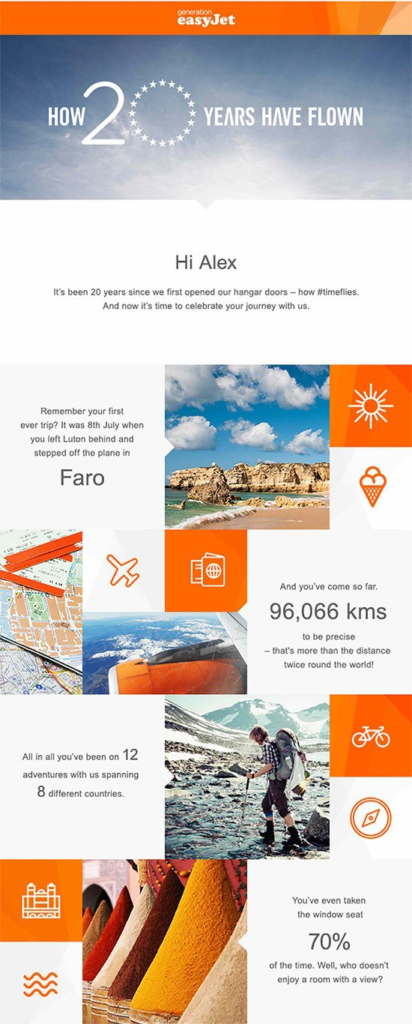
For example, if a user has visited your website several times but never made a purchase, you can send them a message suggesting they check out your latest products or offers.
4. It is time-efficient
Email marketing is also one of the fastest ways to promote your products or services. Many people have automated email marketing campaigns to reach as many people as possible and as quickly as possible.
Unlike other digital marketing channels, email marketing allows you to reach your entire list of subscribers with a single message. This makes it an extremely efficient way to communicate with your audience.
5. It is easily trackable
You’ll never know how well your efforts are panning out if you don’t have a way to measure them. Thankfully, email marketing tools make it easy to see which customers took action based on your messages. These customers often subscribe by entering an email address. Once they do that, you can use tracking pixels to follow up with them as needed.
6. It is a trusted method
Email marketing is also one of the most trusted online communication methods today. Further, personalized emails help build a connection with your audience, making them feel like they’re part of your brand. This may encourage them to trust your service.
Personalized email campaigns are considered more impactful than social media regarding brand communications. This is likely because email messages are typically delivered directly to the recipient’s inbox instead of being scattered among various social media feeds.
7. It helps build relationships
If you’re sending relevant emails to your subscribers and not spamming them, they’ll likely look forward to hearing from you—which means that if they ever need what you offer, they will probably think of you first.
In this way, email marketing offers an excellent chance for customer retention and building your business’s reputation in general. By sending regular emails to update your customers on new products and special offers, you will keep them returning to your website for more. This can help increase customer loyalty and repeat business in the future.

8. It improves SEO
While email marketing does not directly benefit search engine optimization (SEO), it can increase traffic from other websites by sending users to your website once they’ve opened and clicked on one of your emails. As a result, it’s often used in conjunction with SEO strategies.
3 Important Email Marketing Tips
Many people turn to email marketing because it is seen as a quick and easy way to reach out and engage with potential customers who may already be interested in what you’re selling or promoting.
Although email marketing can be time-consuming, it’s also one of the most effective ways to market your products or services online. The Direct Marketing Association reports that it typically costs between $1 and $11 for every 1,000 emails sent out to an email list, depending on the company you use and how many contacts you have on your list.
Companies that send at least one commercial email per month enjoy higher levels of customer satisfaction than those that never attempt to communicate with their target audience via email. Part of this concerns people’s appreciation of knowing they’re being communicated with. There are three crucial steps in crafting an email campaign.
1. Give users value
Any time you ask your subscribers to take action, even something as simple as clicking on a link in the email message, it’s important that you provide them with some value. This can be anything from content (e.g., free ebooks or other valuable information) to discounts and coupons for your products or services.
Make sure there is a clear incentive for them to act immediately. The more responsive your audience, the more likely they will complete tasks when you ask them to do so.
2. Make opt-in and opt-out seamless

Once someone has subscribed to your email list, you can send them messages, inviting them to visit your website and opt in to receive special offers or information about your products. This initial email aims to get subscribers interested in your offer, so they will respond by opting in when asked. This means upgrading their account to include personal information such as full name and home address.
You should also provide users with an easy way to cancel their accounts if they no longer wish to continue receiving your emails.
3. Don’t forget to follow up
Finally, after launching and promoting your email marketing campaign, you must send follow-up messages to those who haven’t yet responded. This is often called a “resend” campaign, and it’s important that you continue to send these messages until you’ve reached your target audience or until you’ve exhausted your email list.
Tips to Create a Successful Email Campaign
Now that we’ve covered the basics of email marketing, let’s look at some tips essential to any email marketing guide.
1. Research your target audience
This can be done through several email marketing tools, including Mailchimp and Constant Contact. If you’re unsure what format to use when compiling the list, go with a simple Excel spreadsheet. Remember that your contacts must have opted to receive emails from you.
2. Create a catchy subject line

This is the first thing potential subscribers will see, so make sure it’s attention-grabbing and relevant to the content of your email. For example, “20% off all children’s clothing this weekend only!”
3. Include a clear call to action (CTA)
This tells subscribers what you want them to do, whether clicking on a link to learn more about a product or service, signing up for a free trial, or making a purchase.
4. Write meaningful content
Make sure your content is interesting and valuable. Nobody wants to read an email that’s nothing but sales pitches. Instead, provide users with content that’s entertaining and informative. If you’re selling children’s clothes, for example, write a blog post about making DIY bows or offer tips on keeping your little one cool in the summer heat.

5. Avoid spamming
Avoid sending multiple emails within the same day (or week). This can be annoying and give potential customers the impression that you’re only trying to sell to them. Instead, space out your messages by at least 24 hours; this will encourage subscribers who haven’t yet opened your email (and those who haven’t yet responded) to open future messages as well.
6. Link smartly
Place links where people are most likely to look for them. These would typically be near the top, under the subject line, or above the email content. However, on mobile devices, links are much more likely to be clicked when they’re placed near the bottom of an email (with a description that provides context for why people might want to click).
7. Don’t forget about your spam filters
Even if you’ve only sent out a few emails and haven’t yet received any complaints from subscribers, there’s still a chance that some of your messages will get caught in spam folders.
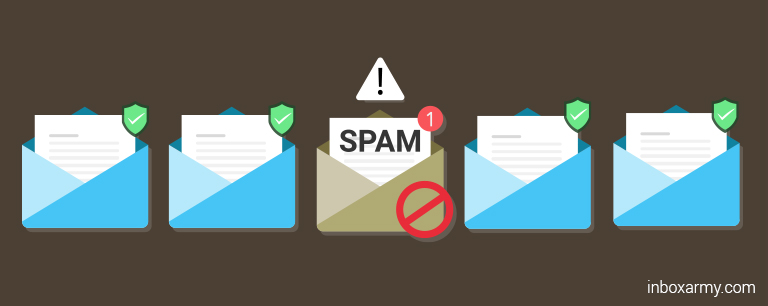
If this happens, ensure you reach out directly and ask subscribers to mark any relevant messages as “not spam.” It’s also possible for your domain to be blocked, which means all your emails will be sent directly to spam folders, no matter what you do. If this happens, you’ll need to contact your email service provider to find out how to fix the problem.
What Is Spam and How to Avoid It
As part of the email marketing guide, these best practices will help maximize deliverability while keeping those permissions options turned on in your mailing lists.
As a disclaimer, you should always double-check the rules for your email clients, especially if you’re doing something outside these parameters. You’ve probably heard that using Gmail to send bulk emails is risky, but just what are the specific pitfalls? Let’s take a look.

Google says that if its system determines that an account looks suspicious (for example, it’s breaking its program policies or sending spam), it may start an investigation. There are six common rules to avoid spam.
1. It doesn’t have permission
One of the first things you need to ensure is that you have permission from your subscribers to send them an email. You can’t add someone to your list without their consent, and you must ensure that you adhere to anti-spam laws.
2. It sends unsolicited emails
This one’s pretty obvious: if people didn’t sign up for your mailing list, don’t send them an email! And if someone unsubscribes from your list, don’t add them back in later.
3. It uses inappropriate messaging
This one’s a little harder to define, but you should avoid sending what could be construed as offensive, discriminatory, or pornographic.
4. It sends too many emails
This is another self-explanatory one: if you send emails to people more than once a day, they’re likely to unsubscribe or mark your messages as spam.
5. It has invalid email addresses
One of the most common ways an email campaign gets flagged as spam is if there are many invalid email addresses on the list. This can be caused by typos when people sign up for your list or the email bouncing back because the recipient’s mailbox is full.
6. It uses poorly designed email templates
If your email doesn’t look professional, recipients will see it as less credible. Stick to a simple design and make sure all your links work.
How to Send Emails in Tandem With Google’s Rules
Although more and more of us use social media and mobile platforms to communicate with people, email is still a vital part of the mix. But it’s important to keep up on what works for this channel – especially as Google has been changing rules about how we market via email.
Some of these changes have had a major impact on marketers’ ability to use email as a lead generation tool. If you’re not careful, you can end up with your service suspended or even banned from sending emails through Gmail.
How can you ensure that your mailing lists stay as white as possible? Given below are a few email marketing rules to follow:
1. Send promotional content selectively
Google has been cracking down on promotional content, which can be a major blow to email marketers. The best way to ensure that your messages don’t get caught in the spam filter is to only send promotional content to people who have specifically opted in to receive it.
2. Use double opt-in
This is another best practice that will help keep your list clean and your permissions options turned on. When someone signs up for your list, they should automatically receive an email asking them to confirm their subscription. This not only makes sure that you’re getting permission from subscribers, but it also helps weed out invalid email addresses.
3. Segment your list
If you have a large list, it’s important to break it down into smaller segments. This will make it easier to target your emails to specific groups of people interested in the content you’re sending out while preventing other subscribers from receiving irrelevant messages.
4. Give your subscribers control
Another important email marketing rule is to give subscribers control over your mailing list by adding unsubscribe buttons throughout your email templates and turning on preference centers. This should be easy for them to find and adjust their preferences whenever possible.
5. Always include a preference center in your emails
Gmail users have been trained not to follow links contained within promotional emails. Still, if you include a link at the bottom of your message directing people straight to the preference center, it will help ensure everyone opts in to receive your messages.
6. Use preview text
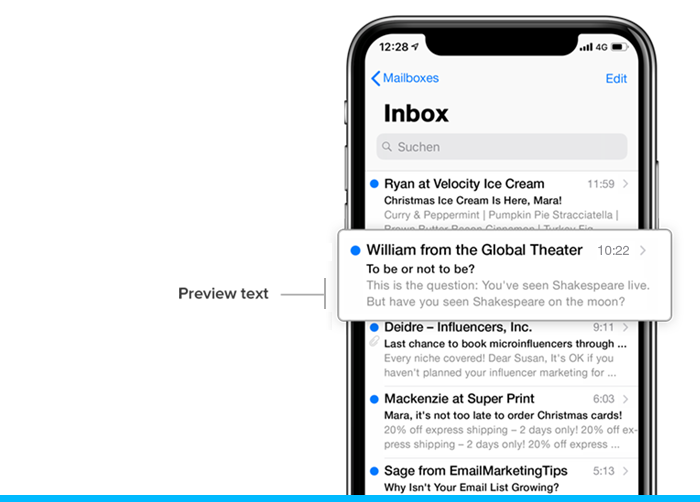
Gmail now considers the text that appears in the preview panel when determining whether a message is promotional. This means that it’s more important than ever to ensure that your subject lines are catchy and enticing and that your email templates look good on mobile devices.
7. Monitor your email delivery rates
If you’re not seeing high email delivery rates, it could be a sign that something is wrong with your list. You should routinely monitor your deliverability rates to address any issues before they cause serious damage to your campaign.
8. Use a trusted email service provider
When it comes to email marketing, it’s always better to be safe than sorry. A trusted email service provider will help ensure that your messages are delivered to Gmail’s inboxes and that they look good when they get there.
9. Timing is everything
Emails can be sent out at any time, but studies have shown that the best time to send them is in the morning or afternoon. This is because people are more likely to check their email at those times.
10. Integrate with other marketing channels
If you’re already using different channels like social media, you’ll want to ensure that your email marketing efforts are integrated with those channels. That way, you’ll be able to reach a larger audience with your messages.
What Is Email Analytics?
Businesses these days are using email analytics tools, which are techniques used to measure email campaigns and identify aspects that help in promoting sales.
These tools collect information on how consumers interact with your website or mobile app, including how many emails were sent or opened, the links clicked within the message, etc. Some tools will even give you location data on your consumer base.
Google Analytics is one of the most popular email analytics tools, as it offers insights into website and app usage and helps track conversion rates. It can tell marketers where their target audience spends most of their time online and what kind of activities result in lost customers (this latter feature is called “retention analysis”).
Many other email analytics tools are present in the market, catering to the specific needs of businesses. E-commerce merchants need to identify their business requirements and then use an email analytics tool that most effectively meets those needs. They can gather valuable consumer insights that will help improve their marketing strategy and increase sales.
The Takeaway
Email marketing is highly integral to any business today. Not only is it cost-effective and time-efficient, but it can also be highly personalized and reach a wide audience. A few more benefits of using email marketing are that it helps build meaningful relationships with customers and helps with SEO rankings as well.
However, there are certain email marketing rules that every company must follow, many of which have been detailed in this email marketing guide.
FAQs
Email marketing is the process through which brands and businesses send out important information, updates, and other content to people who have opted in for such content. It is a highly impactful medium for brand building and lead generation.
Some tips include providing your customers with valuable information, using relevant visuals, strategically including a CTA, avoiding spamming, and using inappropriate language.
Google Analytics, Kissmetrics, and Mixpanel are some of the many tools that you can use to measure and analyze the results of your campaign.
Sending emails without the recipient’s permission, sending too many emails, invalid email addresses, and poorly designed email templates can all be considered spam.
Latest Blogs
In this blog, explore the golden rules of using AI marketing tools so you can leverage the benefits to their maximum potential.
In this blog, you’ll learn how to avoid the pitfalls of SEO over-optimization while enhancing your site’s performance.
In this article, we’ll take a look at what AMP is, its advantages and disadvantages, and how it affects SEO.
Get your hands on the latest news!
Similar Posts
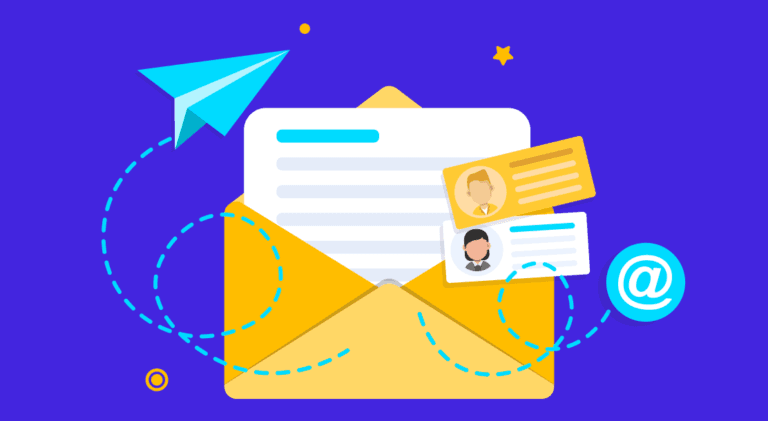
Email Marketing
6 mins read
11 Tips to Design Impactful Email Banners

Design
9 mins read
7 Benefits of a Simple Mailer Design
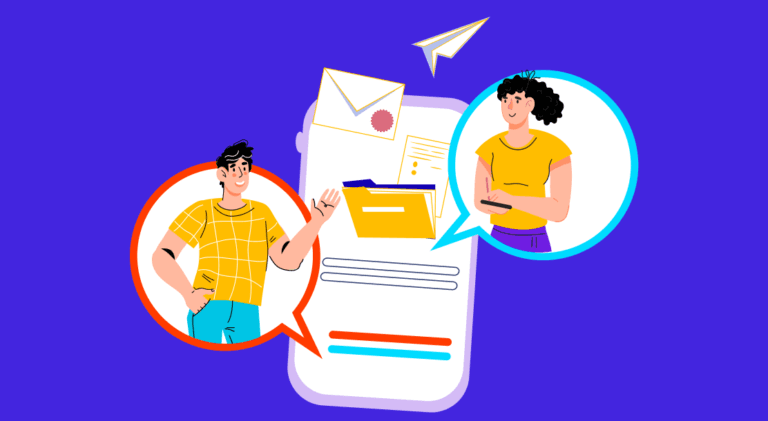
Email Marketing
7 mins read